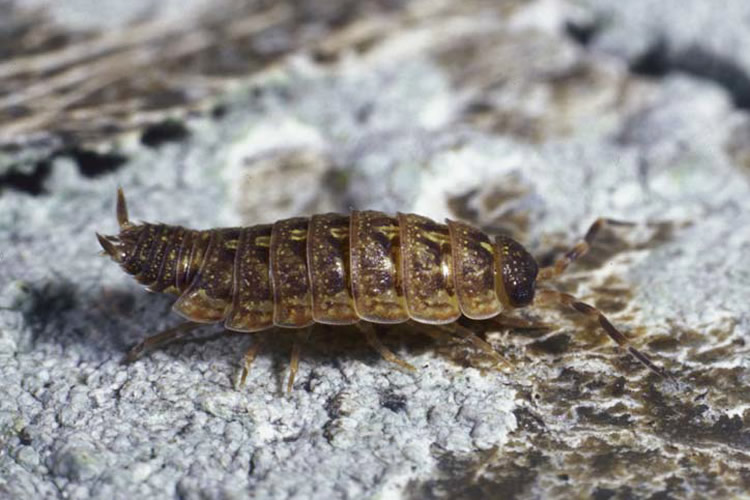Acaeroplastes melanurus (Budde-Lund, 1885)
Synonyms
- Metoponorthus melanurus Budde-Lund, 1885
- Porcellionides melanurus (Budde-Lund, 1885)
Status:
Needs Review
ID Difficulty
Identification
Irish specimens are 5-6 mm in length with a rather narrow, parallel-sided body. Coloration is mottled yellow-brown to grey-brown, appearing slightly rough to the naked eye. It is perhaps most likely to be confused with a mottled juvenile Porcellio scaber (Anderson, 2007), though the stepped body outline is more akin to the closely related Porcellionides cingendus or even Philoscia sp.
Acaeroplastes melanurus can usually be distinguished by the presence of two parallel yellowish streaks in the middle of each segment that form a faint band down the middle of the body and the uropods which are dull brown and much shorter than those of P. cingendus (which usually has brightly coloured uropods).
Distribution
This species was originally only known from a one kilometre length of sea-cliff in Co. Dublin, Ireland, where it was observed between 1909 and 1934, and was assumed extinct until its re-discovery in 2002.
Recently it has been found on the Isles of Scilly (unpublished observation) and in 2023 many specimens were observed by Lloyd Davies on a shingle beach in Dorset. It is possible that additional sites may be discovered in Britain and Ireland.
Habitat
Roy Anderson (2007) found specimens sheltering under lichen covered rocks on steep sparsely vegetated slopes near the cliff tops. This habitat is threatened by scrub encroachment and the long-term survival of this species at this site is in doubt.
References
Anderson, R. (2007) Observations on the status and ecology of Acaeroplastes melanurus (Budde-Lund) (Crustacea: Oniscoidea) at Howth Head, Dublin. Irish Naturalists’ Journal, 28: 497-505.
Links
World List of Marine, Freshwater and Terrestrial Isopod Crustaceans: https://www.marinespecies.org/isopoda/aphia.php?p=taxdetails&id=258642







